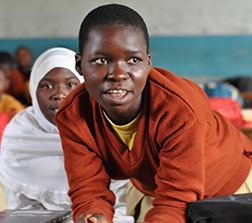- About
- Topics
- Story
- In-Depth
- Picks
- Opinion
- News
- Donate
- Signup for our newsletterOur Editors' Best Picks.Send
Read, Debate: Engage.
| December 19, 2019 | |
|---|---|
| topic: | Child rights |
| tags: | #sanitary pads, #Zimbabwe, #Africa, #women's rights |
| located: | Zimbabwe |
| by: | Cyril Zenda |
The finance minister made a surprise announcement that ZWL $200 million (US$12.5 million) had been allocated for the provision of sanitary pads, starting in January 2020, to all rural schoolgirls who have reached puberty.
“I cried when I heard the news,” Misihairambwi-Mushonga told FairPlanet in interview. “I was away on the day so I missed this life-changing announcement. That this could happen in my lifetime is a blessing! I hope the generations to come will appreciate that it took years of abuse and ridicule to get here,” added the combative legislator whose unorthodox tactics in the fight ranged from bringing sanitary pads, used underwear and even a baby into Parliament to drive home her arguments for the rights of women.
What made Misihairambwi-Mushonga cry was only four months previously Education minister Professor Paul Mavima had told her in Parliament that the provision of sanitary pads for schoolgirls was out of question as the government could not afford it.
“Resource limitation is not a situation that exists only in Zimbabwe. Even the richest country does not provide for all its citizens’ requirements”, Prof. Mavima had said then.
Theresa Nyava, the executive director of Sanitary Aid Zimbabwe Trust welcomed the development saying it will go a long way in bringing equity in education.
She added that this development, if implemented well, would ensure that girls attend school, concentrate and also participate in sporting activities, improve their mental health and generally be in control of their periods.
“It will also address issues to do with period shaming, as girls are often laughed at when they spoil their school uniform or the school chair, or when walking awkwardly due to use of improper and inconvenient menstrual absorbents such as rags, cow dung, you name it,” Nyava said.
She said from their own calculations, the US$12.5 million earmarked for the project can actually cater not just for rural girls, but also for all schoolgirls who need sanitary pads in Zimbabwe.
“From our estimates, we might be actually looking at a number of 550 000 schoolgirls at most, both in urban and rural schools, that need sanitary wear, which translates to a sanitary wear per capita of ZWL $363 (US$22.6). This means that the allocated money is adequate to cater for all schoolgirls who menstruate, in both urban and rural areas.”
The development means Zimbabwe joins other African countries like South Africa, Botswana, Lesotho, Zambia and Kenya that are already – or have also resolved to – provide free sanitary towels to school girls who can’t afford to buy their own. Other countries like Ghana, Uganda and Malawi are also under pressure to introduce similar programmes.
Zimbabwe could be having a good start considering that the US$12.5 million budgeted for this programme is actually one of the biggest budgets for free sanitary wear to schools by any government on the continent, and globally.
Kenya allocated a budget of US$5 million, South Africa US$10.6 million, and Scotland $11.7 million.
By copying the embed code below, you agree to adhere to our republishing guidelines.
